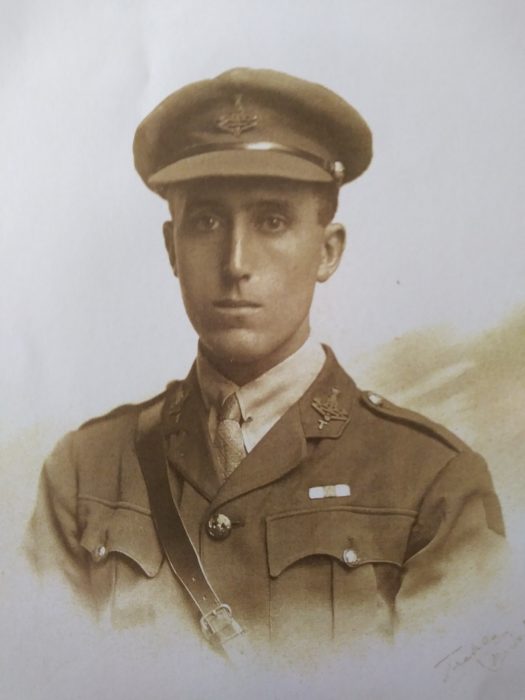
Ruth Kendon came into the museum and told us the story of her father, Reginald Howes.
Reginald Howes (1889-1977) attended the University of London Officer Training Corps (OTC) between 6 May 1915 and 20 July 1916 before being commissioned as a 2nd Lieutenant in the Yorkshire Regiment on 21 July 1916.
He served with the 4th Battalion as temporary Adjutant and Intelligence Officer, and was wounded on 15 September 1916 at Kemmel, just south of Ypres. Ruth remembers him saying he was wounded on the day tanks were first used.
Howes was awarded the Military Cross in March 1918, for “conspicuous gallantry and devotion to duty” on the Somme, during the Kaiserschlacht offensive and promoted to Captain the following month. He was taken prisoner on 27 May 1918 and released on 14 December 1918.
Ruth kindly donated a number of items which belonged to her father to the museum for safekeeping.
Explore more memories from the ribbon
-
John C Morris
John Charles Morris was from South Hetton. He was born in 1896 and was 18 when he enlisted in the Yorkshire Regiment as 14136 Private Morris. He served in the 8th, 9th and 10th Battalions and was awarded the 1915 Star, the British War Medal and the Victory Medal, as well as the Silver War Badge. He was wounded in December 1915 and again in November 1916. He suffered a gun shot wound to his left hand and lost part of a finger and substantial power and movement in his right hand. He also suffered a shrapnel wound to his left foot. These injuries precluded manual work due to a lack of power in his hands. After his discharge in December 1918 he was awarded a pension of 8 shillings a week and was subject to regular reassessments of his injuries. He died aged 61 in 1957.
-
Oliver H Ball
Photograph discovered in the archives of the Green Howards Museum by Stuart Hodgson, with information from Nottinghamshire County Council’s website. Second Lieutenant Oliver Ball was born in 1891 in Daybrook, Nottinghamshire. Both he and his brother, Walter were to die serving with the 10th Battalion, Yorkshire Regiment, which must have been a huge blow to his parents Alfred and Emma. After attending school in Nottingham where he joined the OTC, Oliver was employed at the Nottingham head office of the Union of London and Smith’s Bank. On 28th September 1916 the 10th Battalion were in the trenches near Fricourt consolidating the ground they had recently gained. German shells fell on the positions on a continuous basis. At about 8pm the shelling became much heavier ont the front line positions and as a result 2nd Lieut Oliver Ball was killed by shrapnel. He is buried at Guards’ Cemetery, Lesboeufs.
-
Captain Robert Murray
Robert Henry Murray lived with his family lived at West Cottage, Richmond. He was educated at Richmond Grammar School, and attended Selwyn College, Cambridge – rowing in the college boat at the Henley Regatta immediately before the outbreak of war. He was commissioned as a Second Lieutenant in the Yorkshire Regiment on 8th October 1914, but was quickly promoted to Captain on the 3rd of December 1914. Attached to the Royal Munster Fusiliers, he was Mentioned in Despatches while at Gallipoli. Captain Murray was killed while attending to a wounded man of his Company on the fire-step of his trench. Captain Murray fell in action on 7th July 1916 and is buried at Philosophe British Cemetery, Mazingarbe, Departement du Pas-de-Calais.
